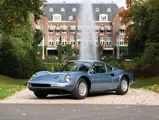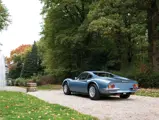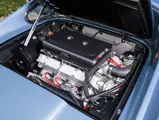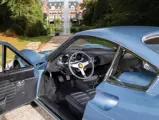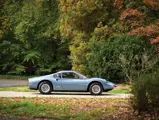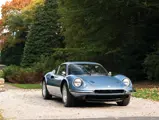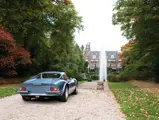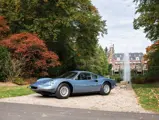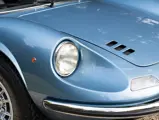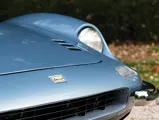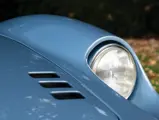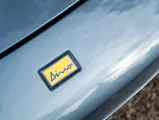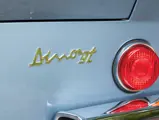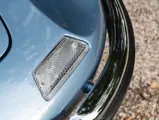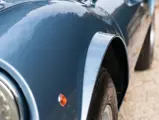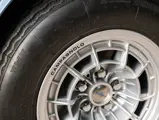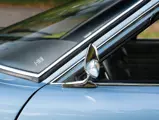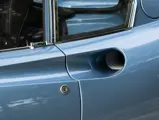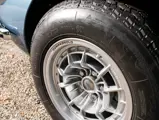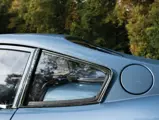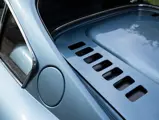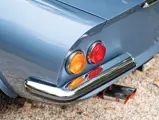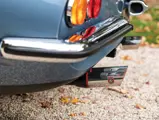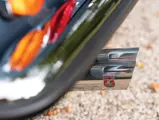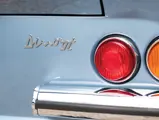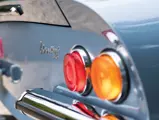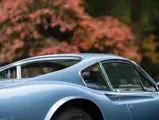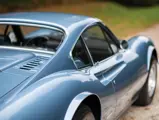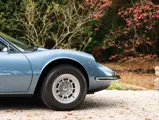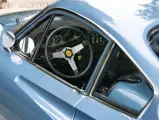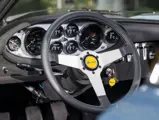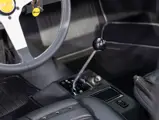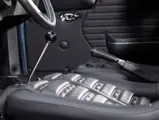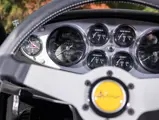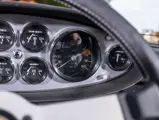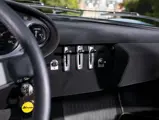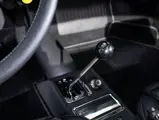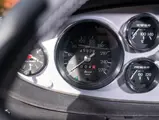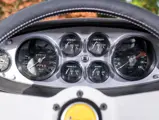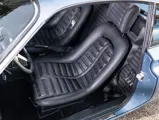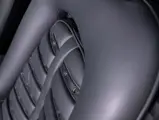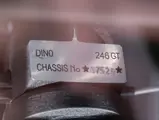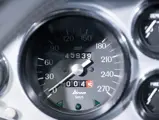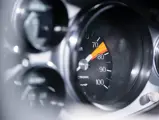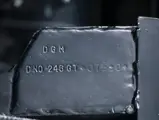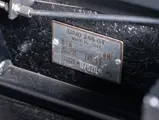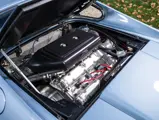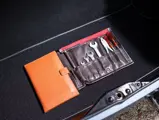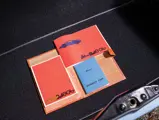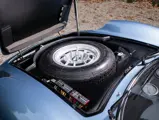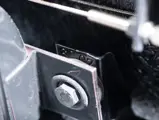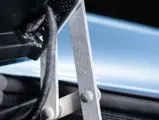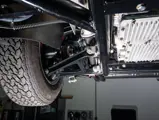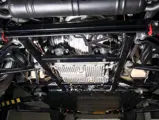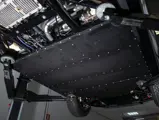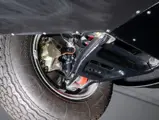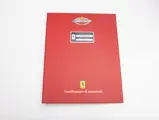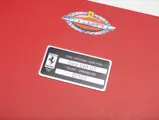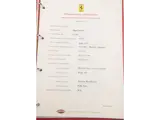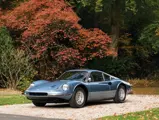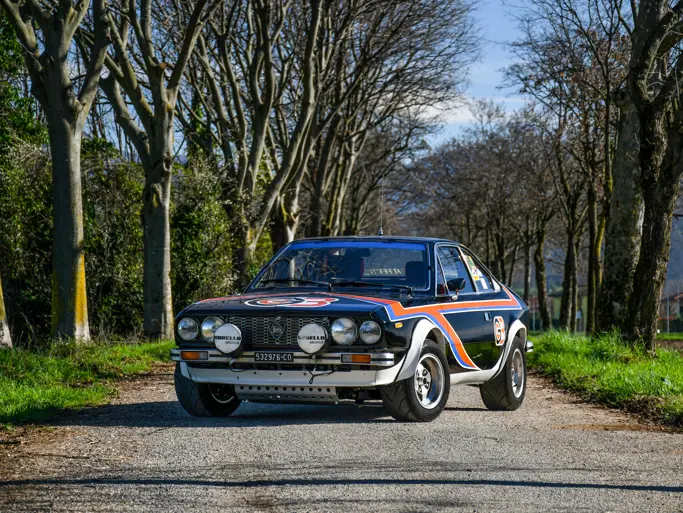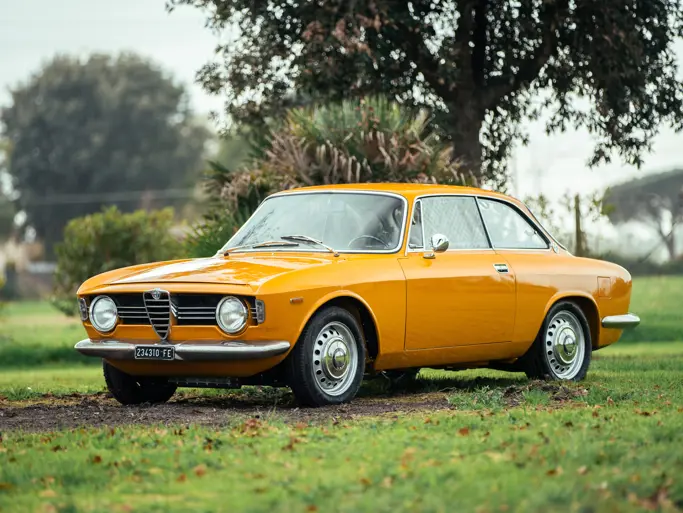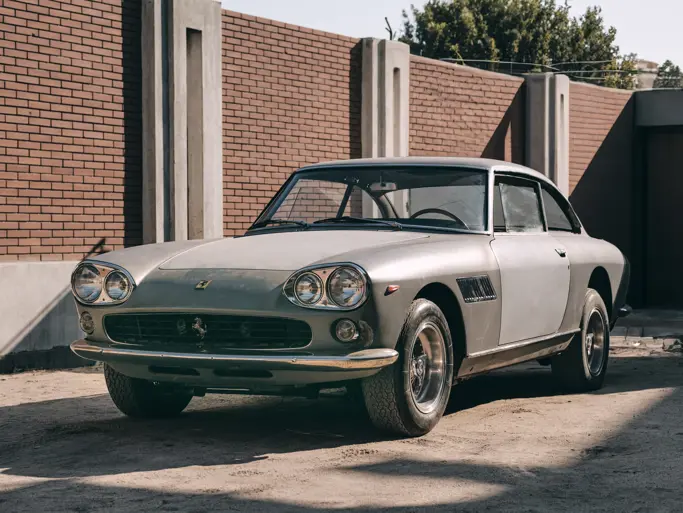Arizona 2019
1973 Ferrari Dino 246 GT 'Chairs & Flares' by Scaglietti
{{lr.item.text}}
$500,000 USD | Sold
 | Phoenix, Arizona
| Phoenix, Arizona
{{internetCurrentBid}}
{{internetTimeLeft}}

- Ferrari Classiche certified
- Rare Daytona seats and flared fenders
- Striking Azzuro Metallizzato over Pella Nera leather
- Purported to be the last “Chairs & Flares” example built
- Includes books, jack, and tools
Ferrari was beyond niche status by the mid-1950s, but its fledgling years were not far behind. For Alfredo “Dino” Ferrari, a studious young man in his early 20s, engine builder Vittorio Jano employed at the Ferrari works in Maranello must have seemed like a demigod. The two collaborated on the 750 Monza race car before Dino succumbed to muscular dystrophy in mid-1956. In his final days, Dino is said to have spent considerable time discussing a 65-degree small-displacement V-6 engine with Jano. Dino believed that the design’s straight intakes and special concessions to create an even firing order made it superior to other V-6s.
Enzo Ferrari honored his son’s efforts by creating a sub-brand of V-6–powered sports cars called Dino. At the 1965 Paris Motor Show, Pininfarina displayed a curvaceous, mid-engined sports car with an enlarged version of the 1.5-liter V-6, that Dino and Jano discussed in 1956, tucked behind its passenger compartment. It was badged the Dino 206 S Speciale, but the engine was a mere mock-up. A working prototype called 206 GT arrived the following year at the Turin salon. The Paris show car’s engine was mounted longitudinally, but by the Turin show it was squeezed in transversely ahead of the rear axle.
Fewer than 200 examples of the 206 GT were built until an upsized, steel-bodied 246 GT appeared in 1964. With its $14,000 price tag, it was less costly than anything else in Maranello’s stable but far pricier than the Porsche 911. In a way, it created its own segment—somewhere between sports car and supercar. That the Dino was marketed without the Prancing Horse branding hurt its image early on, but today it is fully recognized as a thoroughbred Ferrari.
A targa roofed version badged 246 GTS followed a year later. A hair under 5,000 Dino 246s of every stripe were built when production came to close in the mid-1970s. Noted Ferrari expert and automotive journalist Dean Batchelor said that the 246 GT Dino was “a match for almost anything on wheels” and noted that the mid-engined car’s exceptional balance made up for its relatively modest horsepower.
Toward the end of Dino production, Ferrari made 7½-in. sand-cast Campagnola wheels available, necessitating wider Group 4-style fender flares due to the wider track. The optional flares are said to have cost $680 in 1973, and fewer than 200 are known to have been ordered with the wider wheels. An even smaller handful of those cars were also fitted with seats from Ferrari’s Daytona, racing-style buckets plucked from the V-12 monster.
The 1973 Dino 246 GT offered here is one of just five known to be built to European specifications with the “Chairs & Flares” options, and it is believed to be the final example so-equipped with this desirable combination. It was built to European specifications and delivered new in April 1974 to the dealer in Madrid, Spain, according to Ferrari Classiche, but was exported to the U.S. not long after.
An accident in the early 1980s sidelined the Dino for more than two decades. Ironically, its time off the road helped preserve it. In 2005, it was exported to the Netherlands for restoration. When the initial rework did not pass muster, an exhaustive restoration by Lusso Classics began in 2010 and was completed in 2017, and was then awarded Ferrari Classiche certification. As part of its restoration in Europe, the Dino 246 GT’s body was fully restored and painted Azzurro Metallizato, a striking, lighter shade than its original Dino Blu. Its interior retains Daytona racing-style seats that have been reupholstered in dramatic black leather rather than the original tan. This Dino 246 GT also features optional power windows as well as its original radio.
This restored Dino presents as new in every way. Careful attention was paid to its mechanical restoration, and its underbody, suspension, and engine compartment appear as they would have when it was built in 1973. It rides on correct Campagnolo alloy wheels wrapped in period-style Michelin tires. An Ansa dual-outlet exhaust pokes out from beneath its superb chrome rear bumper. The Dino’s engine, a correct type replacement, presents as new and was treated to a complete rebuild. Its Veglia gauges show about 45,000 km, but it has only been driven a few exhibition kilometers since the completion of its restoration.
A full set of manuals, tools, an original jack, and a Ferrari Classiche certification binder will accompany the 246 Dino GT.

